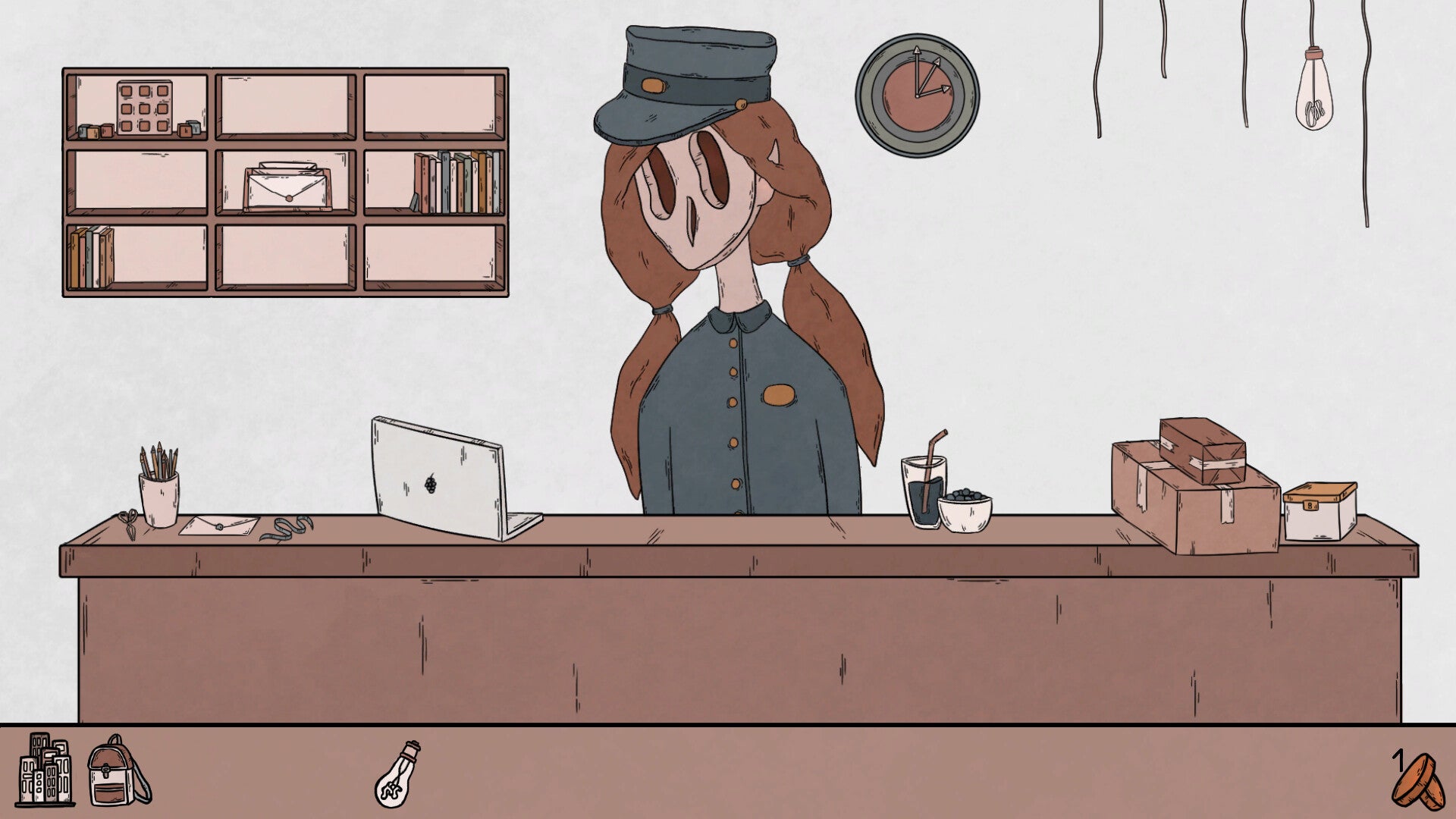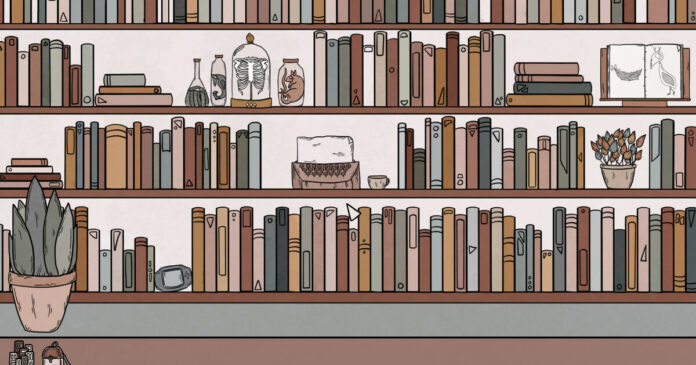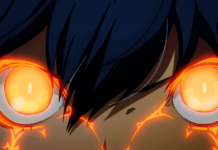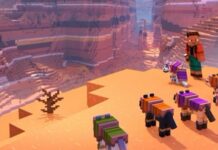Warning: This piece contains discussions of mortality.
To play the current build of Birth, I go to my desktop and click on a small icon showing a picture of a tooth. This is important: it’s a whole tooth, with the parts seen and the parts that, traditionally, go unseen, since they exist beyond everyday thoughts and below the gumline. “Below the gumline” might be a nice way of thinking about Birth itself, as it happens, a whole game that exists below the gumline. And that tooth? That tooth is perfect. This is not the cheery childhood mouthful of sparklers you draw with a few idle strokes of the pen. It’s the tooth extracted. The whole horrible truth of it. What could be more familiar? But with those roots, those prongs, what could be more inhuman, more uncanny?
Birth is not a game about dentistry, although if you’re the kind of person who really wants to play a game about dentistry, you’re probably going to enjoy this game too. Birth’s creator, Madison Karrh, describes her game, with the concealed weariness, it can seem, of someone who’s spent the last few years trying to get an elk to fit on a Vespa, as a point-and-click game about living alone in a big city. To defeat your loneliness, you collect the bones and organs you find scattered around, and with those bones you slowly build a friend.
Where do you find the bones? You go to different buildings – shops and libraries and apartments – and meet the creatures who live there. You get to know the creatures by examining their things, their personal effects. You solve puzzles, too, ranging from physics challenges to more abstract stuff. How to get an eyeball out of a gumball machine? What do these fragments of pottery make when put back together?
Oh yes: and the game doesn’t explain itself. You poke at it, and all but hold it up to your ear for a brisk rattle. You give it all your senses. What’s inside? What does it want? There aren’t many games I can say this of, but I think I know what the world of Birth would smell like. It would smell like an old textbook from the 1950s, which had spent considerable time on the sunbleached shelves of a forgotten storage library.
Karrh, who I spoke to last year, over Zoom, from my living room to her Chicago kitchen, tells me that while she’s been making Birth, she’s been listening to Frankenstein on audiobook and also playing Shenmue for the first time, and delighting in the parts of the game where you open drawers and cupboards and root through people’s stuff. Birth makes a bit of sense in that light – and it also makes a bit of sense when she tells me how much she admires the Rusty Lake games. But I want to know: what about the extracted tooth? What about the dead leaves, fish skin, jar lids and handfuls of rattling pebbles? These are the things Birth and its puzzles are made of, and the things that have cropped up in Karrh’s previous games, such as Landlord of the Woods and Whimsy.
When I play Karrh’s games I feel an unusual need to really make sense of certain things. Mostly, I need to draw a line around the stuff she puts in her games. It all seems of a piece, but how can it be, when it’s also so diffuse? Bird’s feathers and bits of egg, tarnished coins, rubber bands and gravel. I wanted to ask Karrh, when we spoke, about how she chooses this stuff for her games. And then I remembered, actually as I was dialling in, a photography project I had seen several years ago and found obscurely moving. A mother had photographed everything she had found each day in her young child’s pockets. And guess what? Feathers, pebbles, plastic monsters, rubber bands. Dead leaves. No teeth, thankfully, but you get the point.
I run this past Karrh, because I am unbearable, and she nods, and tells me that, actually, she used to teach preschool. “I had a child for a bit at the preschool who would eat rocks,” she tells me. “A child who was a big pebble eater.”
She drifts off for a millisecond, or seems to, perhaps conjuring the pebble eater from the past. “Yes, absolutely,” she says. “And I think the point about children? Children find so much joy in the things that adults view as mundane. So, like, rocks are not interesting to most humans.
“But,” she continues, “I hope to hold on to that joy. To engage with life for much longer. And I think being around children does that. Just working at the preschool, kids are very funny, and they just see things. Things are so new to them.”
The pebbles and feathers get at something deeper about Karrh’s games that I cannot put my finger on, and which I’m hoping she can help me with. It’s not just the strange coherency of the things these games contain, it’s the way that they make total sense – I always feel certain I’m feeling exactly what I’m meant to feel at every moment of them – and yet when I emerge, I’m wordless to describe what’s gone on, and I’m wordless when it comes to what I’ve learned, particularly since what I learn always feels valuable. Somewhere, I suspect, Karrh is creating a grammar. She is creating a means of expression, and one that has absolutely nothing to do with words.


This is particularly true of Birth, which, in a way that has been important throughout the creative process, says nothing directly to the player. Back in a previous game, the glorious Landlord of the Woods, we got a bit more. A line or two at the beginning to cue us into a tale of melancholia, at least. With Birth? No such help. Is there a purposeful retreat going on?
“I want to be trying to move further away from dialogue,” Karrh says. “While I think it’s very charming to give a character dialogue, I think if I can portray an idea or a feeling with just shapes, the more I can do that, the more I feel accomplished as an artist versus having to tell you. Even with, like, tutorials and stuff, I don’t want to tell you how to do the thing, I want it to be as intuitive as it can be.”
And the grammar that’s building in her games? “Yeah,” she considers the point. “So I will say that most of the vocabulary I use around my games comes from people who have [played the games and] who asked observant and insightful questions. They make me feel, “Oh, I didn’t know that I was making a thing like that.” But I agree wholeheartedly. So a lot of it comes from other people’s observations, because a lot of it is subconscious.
“Of course, I have like script names for, like, draggable items, or whatever. But yeah, a lot of bones. We have a Field Museum here in Chicago that’s just full of dead, dead animals. And that is very inspiring. A lot of it is subconscious, though. And I also like the idea of not telling a story, but exploring an idea. The things that I make, there’s no grandiose moment that happens. [Instead], you’re just focusing on, like: I’m a little lonely and maybe I’ll make a game about it.”
All of this has emerged over time, as I discover when I ask her how she refers to the exact shade of dirty pink she likes to use – the pink of old maths textbook print rather than the bright pink of 1980s T-shirts. “I don’t know what it’s called either,” she says. “I wish I had a more definitive answer. I wish I was more cognizant of the creative decisions that I make that are good. or that I could replicate at a certain point. [Compared to Birth,] Whimsy has a much darker style, and I was very into blues at the time and I didn’t have a defined colour palette or worldspace. Even the characters are all very different. I think it really just comes from the past three years making stuff. You just find yourself more and more.”

No matter how much experience she has, she tells me that for her each game still begins with exploration. “I think at the beginning, it has to be much more exploratory,” she tells me. “I never had that feeling of like, Oh, this feels really good. There’ll be some times where I’m making something and I’m like, Oh, cool, so cool. I think there’s two separate feelings. There’s the feeling of making the thing that just feels really good. And then the feeling of observing the things you’ve made and re-evaluating.”
This process of re-evaluating is crucial too. “Recently, I’ve been working on the ending for Birth more. And so I haven’t played through the beginning part. But I recently did play through the beginning few buildings, and I was, “Oh, this game is so sweet and good and feels like me, it just feels it.” I think you will always look at a creative work and, you know, months later, you can see where you can improve. But there is an amazing feeling when you feel like you’ve reached a point where you can make something and then a few months later look at it and still think it’s pretty good.”
Speaking of what “pretty good” means to her specifically, I ask if she’s making these games in part to understand what it is she wants to explore in the first place. Are they an act of discovery for the designer as much as the player?
I feel this particularly when it comes to the puzzles in Karrh’s games, incidentally. As I pick through them, I have that wonderful sense – my sense of this is probably completely wrong, granted – of what it must be like to move these pieces, these feathers, this gravel, these bottle tops. To move them around as a designer and get them where they are meant to be for the player to best pick them up. In Birth, too, you’re always moving, wandering with that empty undirected sense of having bunked school. You pluck at a puzzle, move from a bakery to a library, and then I wonder, for Karrh, if she can look back at this point, these trails back and forth on various levels, and realise, “Oh, actually this is what I wanted to say.”
“Yes,” she says. “For the most part, I am not cognizant, even when I first started working on Birth. I knew that I wanted to explore the idea of building a body, but I didn’t really know what your motive as a player was. And eventually it came out. Obviously, I’ve spent most of my 20s living in tiny studio apartments surrounded by other strangers living in tiny studio apartments. So that feeling of loneliness came through just naturally. And I was like, Oh, that is what I want to focus on. And I think even on the micro level of making one of the buildings and making one of the puzzles in one of the buildings, you just have to keep making things to eventually figure out how you can rearrange them. Just to say what you want to say.”
That sounds a bit like one of the puzzles in the game itself? “Yes,” she laughs. “Yeah. That’s a lovely correlation for sure.”
But that tooth. I can’t stop thinking about that tooth. And that’s because Birth does speak to me in parts, and over time I’ve actually started to understand what it’s saying – what it’s saying to me, at least. With its skulls and bird skeletons and stones and discarded bobbins, when I play Birth, it seems to me the clearest I’ve ever seen a game get at a certain surrealism lurking within death. Like I am Dead, perhaps, a game that Birth would live very happily on a shelf with, Birth seems to understand the obvious yet enduringly weird fact that death is a one-way process, and understand how deeply odd that is. You can go through that door, but you can’t come back through that door. And in the game’s attempt to reconstruct a person from these shreds of organ and bone you’re collected, it seemed to be talking about that quite directly. When someone dies, there’s something strange going on, because they were here and now they’re simply not here and nothing else will do.
At the end of our conversation, I ask Karrh about the body that the player builds in Birth. More specifically I ask about how one should feel about it. I feel, personally, that it’s sort of beautiful and also, in some ways, extremely upsetting. What I see most clearly is the gap it represents – the gap between the living and the dead, doubled in the gap between what the player wants the body to be and what it actually is. I’ve only played an early build of this game, and only really a part of that build, but already, this is quite hard to take.
“The gap,” she says. “The gap between, yeah, what you were making and what you know that it will be. You know what parts you’re collecting. And you know, what, likely, it will end up being. I think that, you’re definitely supposed to feel unsettled. Yeah. I think just in general, the concept of death, having a loved one pass? And then the days, the weeks, even the years after that of thinking: that person was here, and they’re not here anymore, and I have grown to be a completely different person. Just like that. So I think the underlying feeling of knowing you will cease to exist one day, is an unsettling feeling that we feel in real life. And I think it’s just more dense in Birth, probably.”
And it’s clearly a fixation in Birth that after death we become an object?
“Yes. You do, you do still have a very physical form that is a weight on the people around you. Someone else needs to take care of that when you’re gone, you leave behind a big, big physical presence.”
What I love is this: a game like Birth, the games that Karrh makes, they make me dig about at huge almost wordless things like this, but on another level they feel sweetly unsolvable, like their full meaning and their full potential for meaning will never be fully excavated. A game like Birth sends me off in so many different directions, and none of them feel comprehensive. You get a coherency – of personality, of viewpoint I think – but you also get something that, thrillingly, cannot be solved and tidied away and therefore forgotten about.
“Yeah,” says Karrh. “I think that making things in general is a way of coping with emotions and the ideas that I’m exploring. And I think probably it does seem unsolvable because, to me, it’s not solvable. So it’s not like I’m making something with the answer. I’m saying, “Hey, I’m dealing with this. What about you guys?” It’s that versus, “Here’s an answer.” All of these underlying issues that are not solvable in real life, and art makes it easier, right?”
Birth is released on PC on 17th February.
www.eurogamer.net







